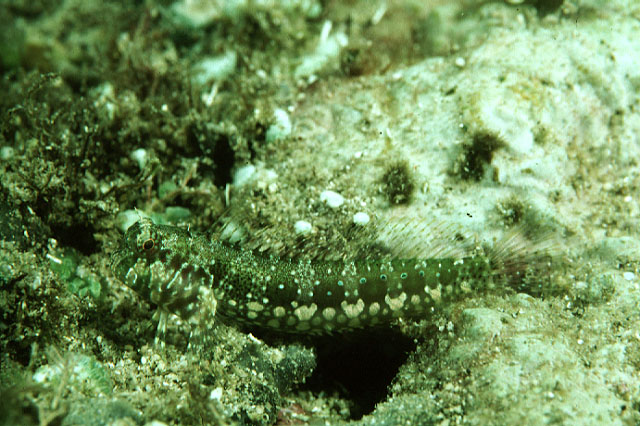| Blenniidae (Combtooth blennies), subfamily: Salariinae |
| 6 cm TL (male/unsexed) |
|
reef-associated; marine; depth range 0 - 5 m |
| Indian Ocean: Pinda, Mozambique (Ref. 26282) and Seychelles (Ref. 1623). Western Pacific: Japan (Ref. 559) to Australia (Ref. 2334). Recently reported from Tonga (Ref. 53797). |
|
Dorsal spines (total): 12-12; Dorsal soft rays (total): 16-17; Anal spines: 2-2; Anal soft rays: 17-18. Nasal and supraorbital cirri slender and pointed, nuchal cirrus short and simple. Occipital crest absent in both sexes. Anterior anal fin rays in may very elongate. Attain 5 cm SL. |
| Adults are found in shallow protected reefs, usually in intertidal areas (Ref. 9710). Often seen in tidepools (Ref. 90102). Oviparous. Eggs are demersal and adhesive (Ref. 205), and are attached to the substrate via a filamentous, adhesive pad or pedestal (Ref. 94114). Larvae are planktonic, often found in shallow, coastal waters (Ref. 94114). |
|
Least Concern (LC); Date assessed: 04 February 2009 Ref. (130435)
|
| harmless |
Source and more info: www.fishbase.org. For personal, classroom, and other internal use only. Not for publication.

